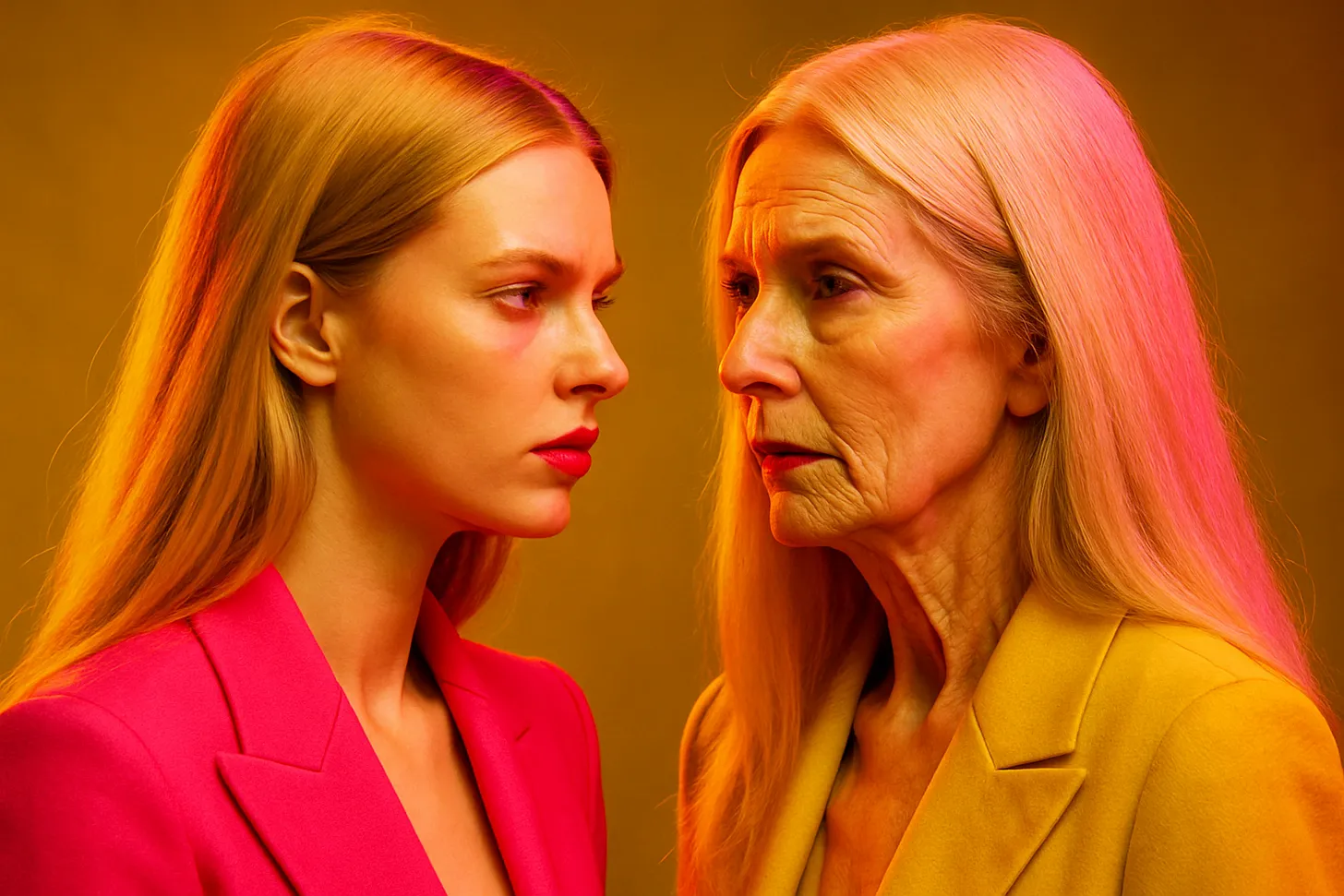Demi Moore’s latest film The Substance starts as body horror but ends up a cultural mirror.
It’s grotesque, brilliant, and maddening not because of the gore, but because it nails a truth women have been metabolizing for centuries: when men want to look better, they’re innovators.
When women want to look better, they’re monsters.
At least, that’s how the movie begins.
For the first half, it’s visually stunning shot with the stylized precision of Stanley Kubrick meeting Wes Anderson at a beauty counter. The color palette hums with surgical perfection; every frame feels deliberate. It’s sharp, eerie, hypnotic.
And then something changes.
It’s as if someone switched directors mid-film. What begins as a sophisticated, slow-burn commentary on beauty and control spirals into a full-blown parody of itself. By the end, the film devolves into shock-horror, and whatever nuance it had gets swallowed by chaos.
Which, in a way, makes the whole thing even more ironic. The Substance critiques society’s obsession with perfection and then, in its own way, becomes a victim of that same excess.
The Memeification of Meaning
And yet, the world loved it. Not the film necessarily, but the imagery.
Within days of its release, social media was flooded with memes of Demi Moore standing next to her younger self, often paired with Kris Jenner and captions like, “When your Botox wears off” or “Me vs. me after 10 sessions of therapy.”
That’s the real horror—not the prosthetics, but our reaction to them.
The fact that the most viral takeaway from a film about the exploitation of women’s bodies was, again, the image of a woman’s body tells you everything you need to know. The culture can’t help but turn female pain into content.
Discover more insights in Meggen Harris’s full Forbes article.
Comments
comments

